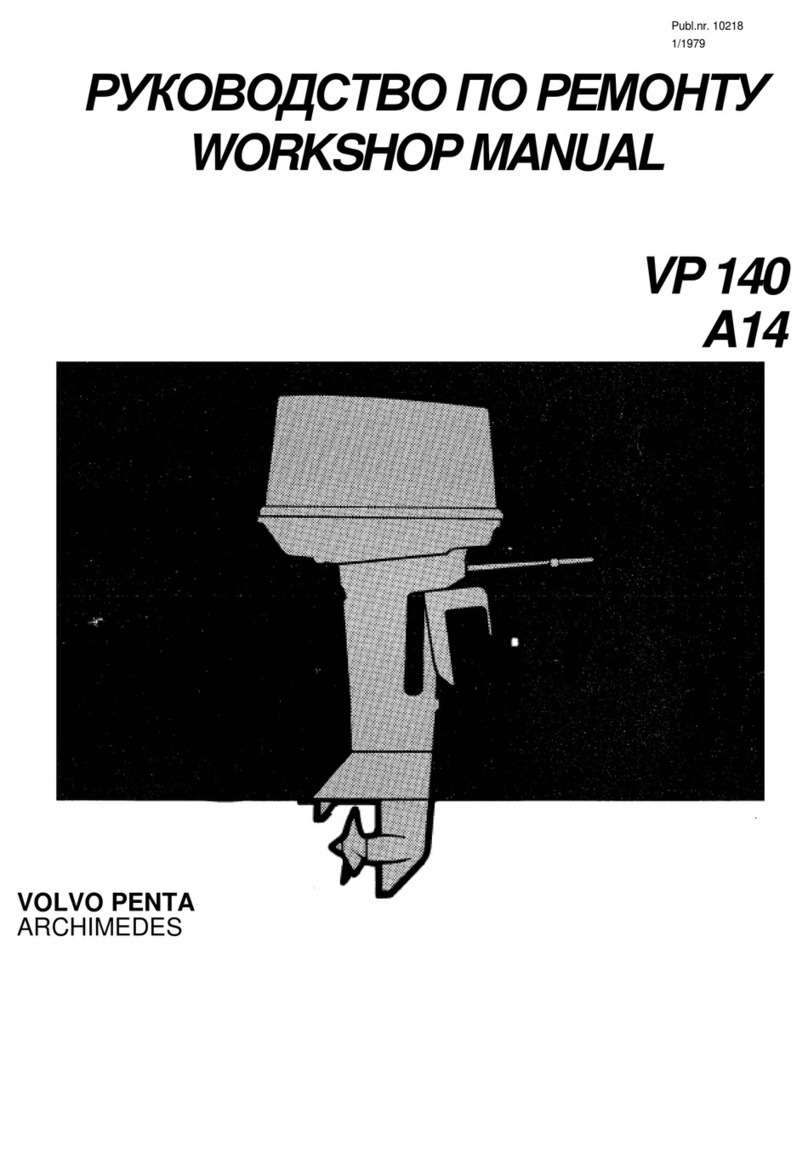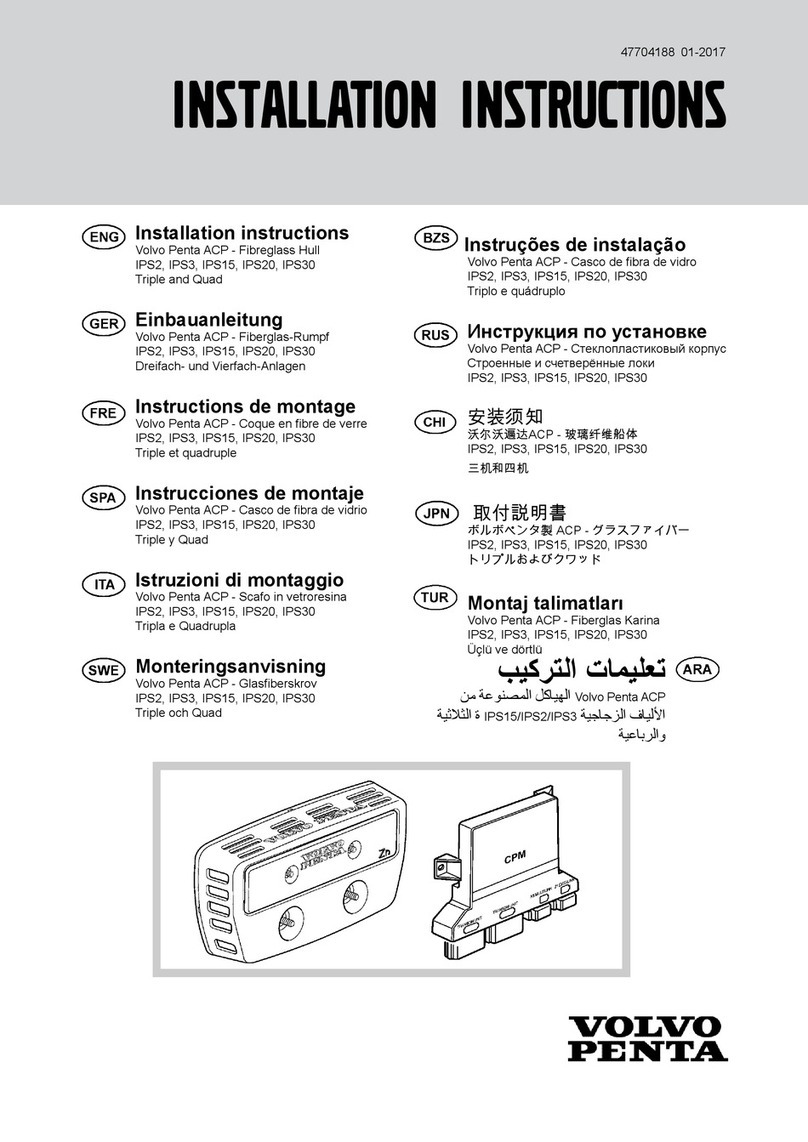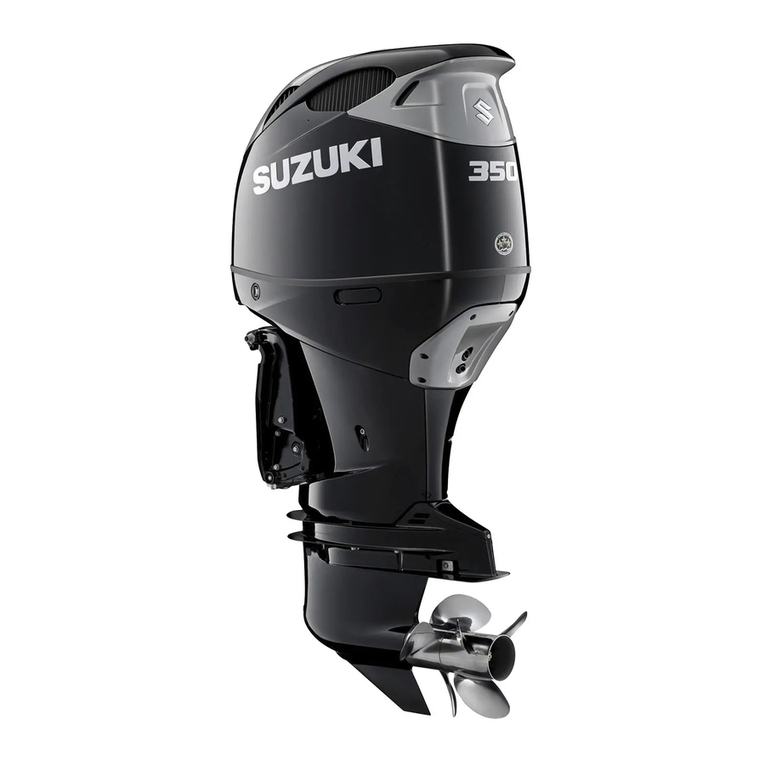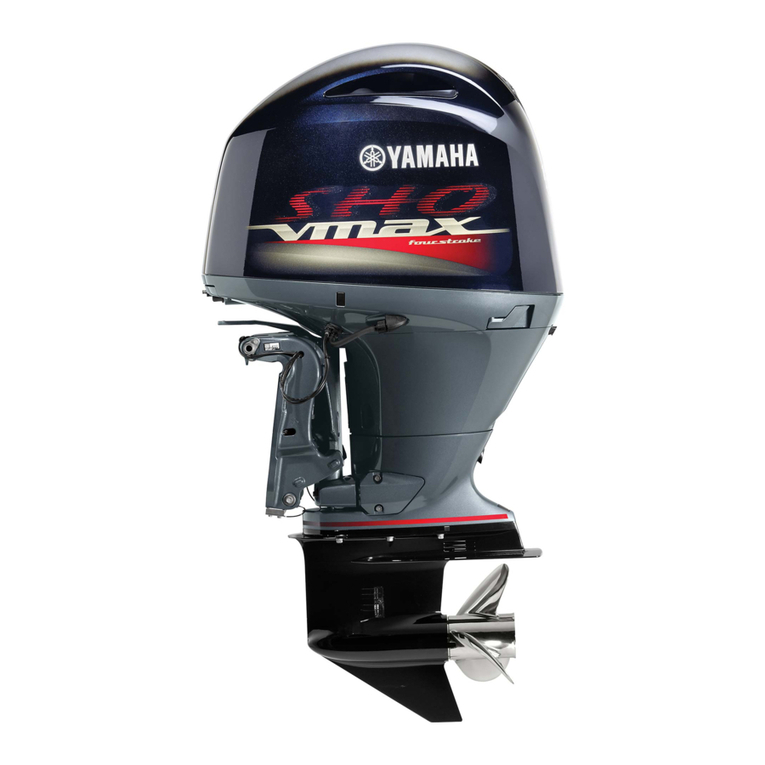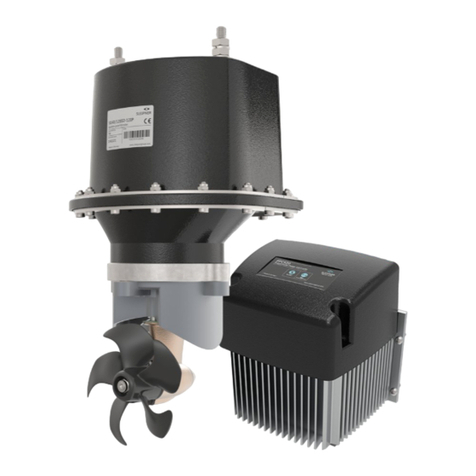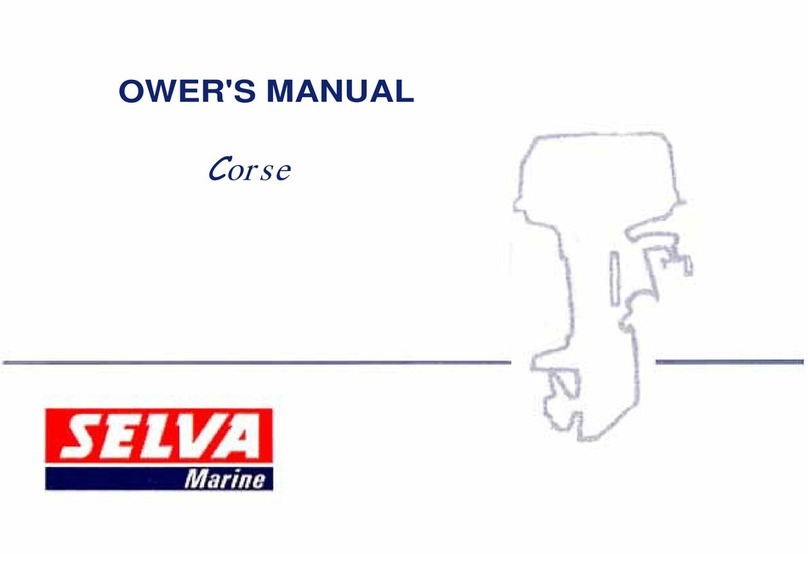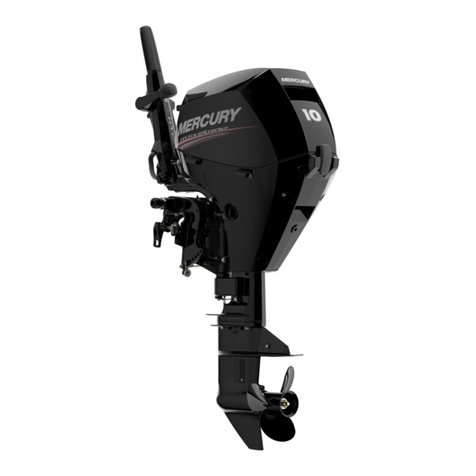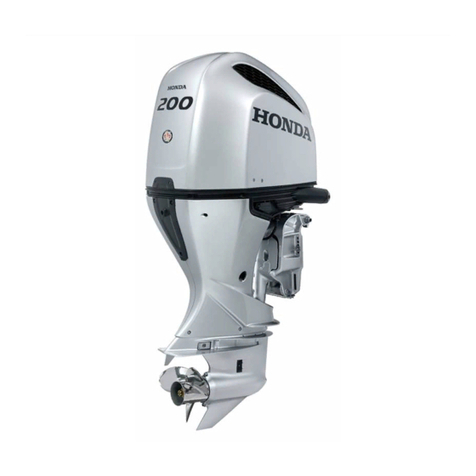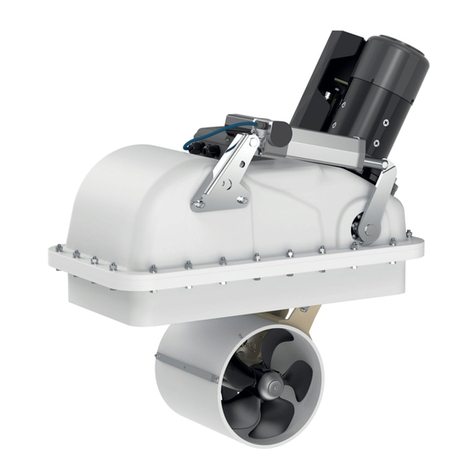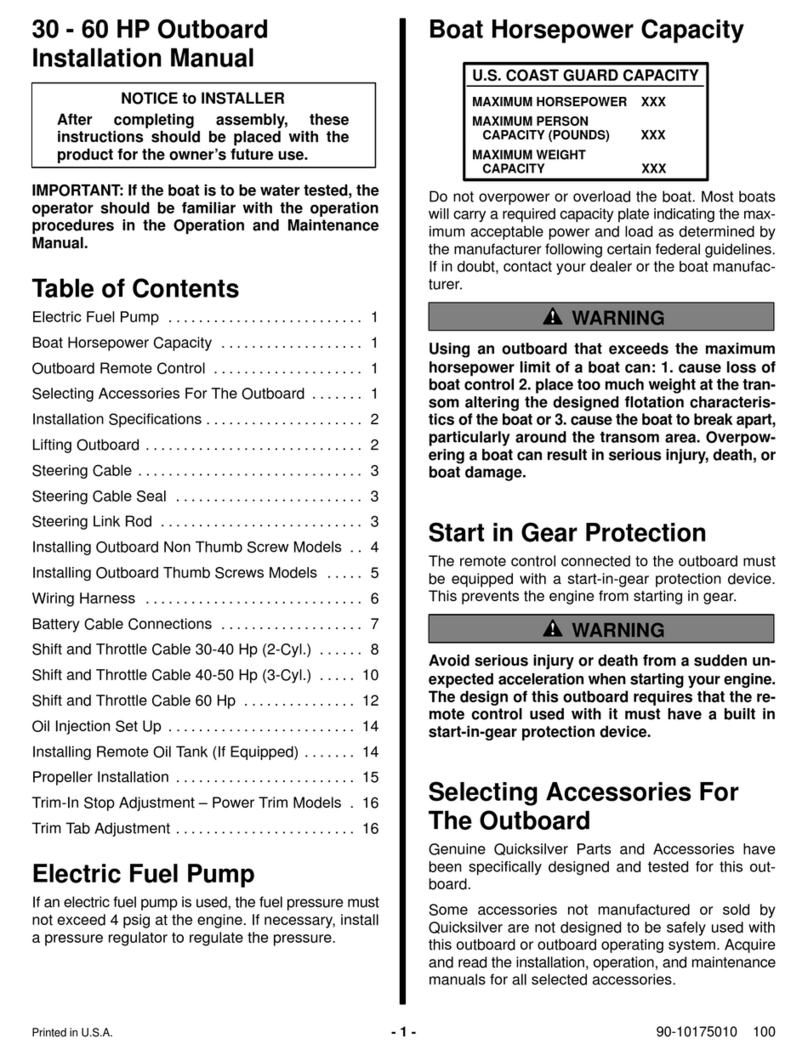
2
Contents
Afteruse .........................................................39
StoppingtheEngine.....................................39
SafetyMeasures..........................................39
SaltWaterOperation ....................................40
ColdWeatherPrecautions ............................40
Laying-upinWater........................................40
Laying-upon Land........................................40
MaintenanceSchedule ...................................41
Maintenance and Care ..................................42
Engine ............................................................42
Belt Adjustment ...........................................42
OilLevel:CheckingandTopping-up ..............43
OilandOilFilters:Replacement...................43
Cooling System..............................................44
DrainingCoolingSystem
(Raw Water System)........................44
DrainingThe Cooling System
(Optional Closed Cooling System)...45
Impeller:Checking& Replacing....................45
CoolingSystem:Inhibiting............................46
Fuel System....................................................47
Fuel:General ...............................................47
FuelCell ......................................................48
FuelInjection ...............................................48
FlameArrestor .............................................48
FuelFilter:Replacement ..............................49
PreventingGumFormation andCorrosion....49
ElectronicEngineControl.............................50
Ignition System ..............................................50
Spark Plugs .................................................50
IgnitionCablesand Distributor Cap ..............50
Electrical Systems .........................................51
Electrolytic Corrosion ...................................52
SacrificialAndodes ......................................52
MainON/OFFPowerSwitch ........................53
Battery:Maintenance ...................................53
Connecting andDisconnecting .....................53
Cleaning.......................................................54
Electrolyte Level ..........................................54
Battery:Charging .........................................54
Engine Alignment ..........................................55
Laying-up & Launching ................................56
Inhibiting ......................................................56
Laying-up .....................................................56
Launching ....................................................57
Paintingthedriveand underwaterhull ..........58
General ........................................................58
UnderwaterHull............................................58
EngineFlush................................................58
Troubleshooting .............................................59
Technical Data ................................................60
Fuel Specification. .......................................62
SafetyPrecautions .......................................... 3
Introduction ..................................................... 5
PowerRatings ............................................... 5
How Load Conditions Affect the Speed of a
Planing Hull...................................... 5
“Stationwagon”Effect.................................... 6
YourNew boat ............................................... 6
Boater’sResponsibilities ............................... 6
PlanningYourTrip .......................................... 6
SafetyEquipment ......................................... 7
Basic Safety Rules of Boating ...................... 7
HighPerformance BoatOperation ................. 7
CertifiedEngines .......................................... 8
General Information ........................................ 9
IdentificationNumbers .................................. 9
Owner’sIdentification Card............................ 9
Volvo Action Service (VAS) .........................10
DoingYourOwn MaintenanceandRepairs ...10
Parts and Accessories.................................10
ConsumerAffairs Department......................10
VolvoPentaDealerNetwork .........................11
Volvo Penta on the Internet ..........................11
WarrantyInformation ....................................11
WarrantyRegistrationForm..........................11
Features .........................................................12
Transmissions ...............................................26
Instrumentation .............................................28
Tachometer ..................................................28
TemperatureGauge ......................................28
OilpressureGauge ......................................28
Voltmeter .....................................................28
InstrumentLighting ......................................28
Fuses, 8 Amp ..............................................29
Ignition Switch .............................................29
Emergency Stop Switch...............................30
Controls ..........................................................31
Maneuvering ................................................31
DisengagingtheShiftFunction ....................31
Adjustment of Friction Brake ........................32
Starting the Engine ........................................33
Preparations.................................................33
Starting........................................................34
If Engine Floods...........................................34
Operation........................................................35
CheckingInstruments ..................................35
OilPressure.................................................35
EngineCoolantTemperature.........................35
Charge .........................................................35
Engine ProtectionMode ...............................36
Master/SlaveInstallation..............................36
HighAltitudeOperation ................................36
HowtoShiftandControlSpeed ...................37
TwinUnitManeuvering .................................37
CruisingSpeed.............................................38



